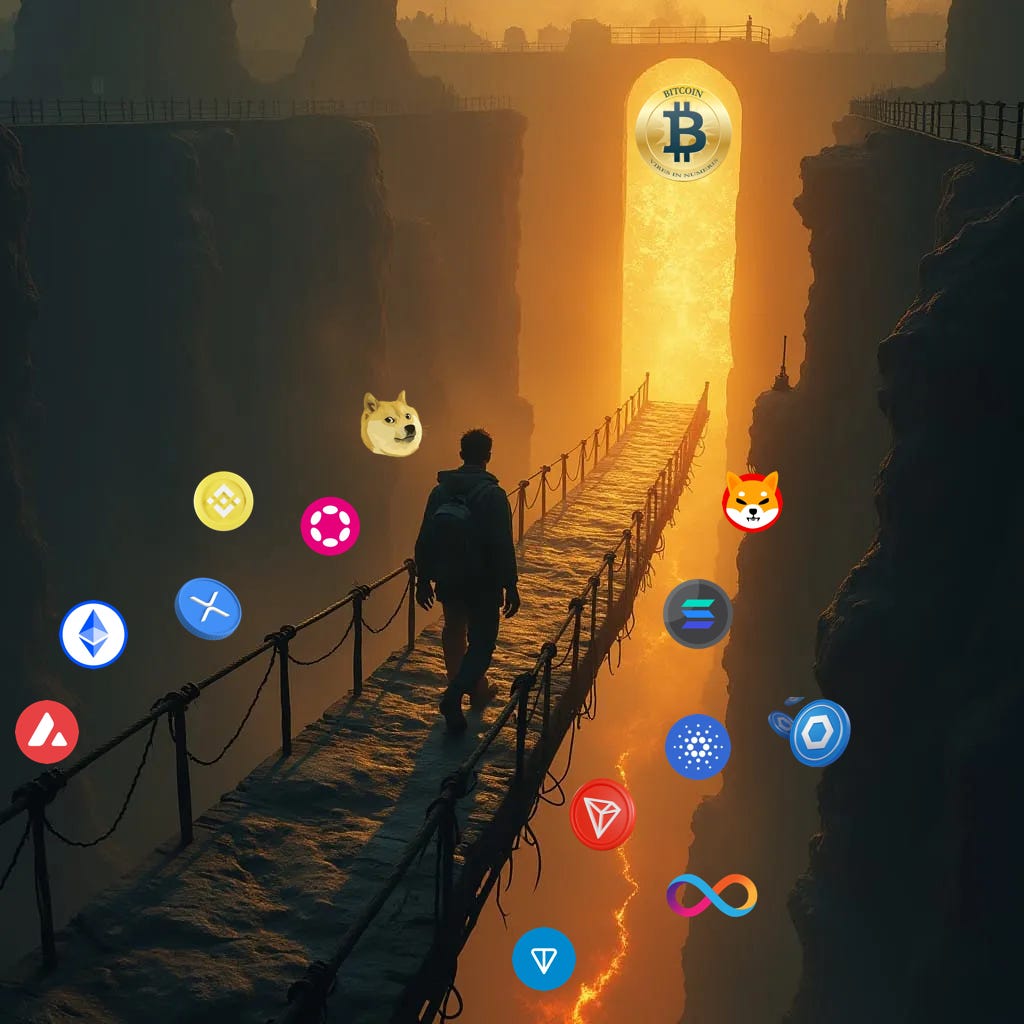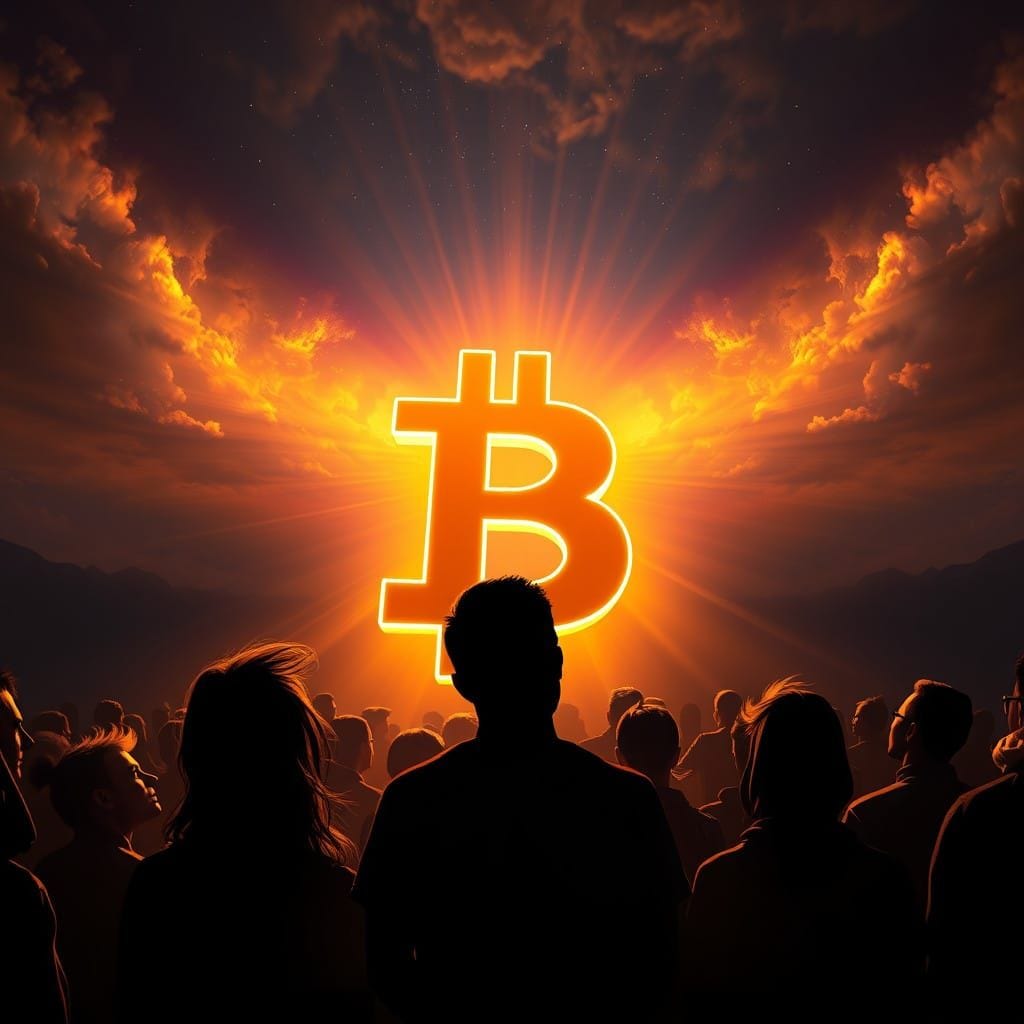Bitcoin or Altcoins ? Understanding the Difference and Avoiding the Traps
If you are new to the world of cryptocurrencies, it is crucial to understand that Bitcoin is a revolution in itself, while other cryptocurrencies, called "altcoins," often have only one goal: to exploit investor naivety to enrich their creators.
Bitcoin: A Unique Innovation
Bitcoin is the first and only authentically decentralized, secure, and immutable cryptocurrency in the world. Its purpose?
To provide an incorruptible global currency beyond the control of governments and central banks.
To preserve value over time with a supply capped at 21 million units.
Most people who haven't studied the subject fail to grasp that no other "crypto" can replicate these fundamental characteristics, no matter what they are told.
Altcoins: A Sea of Traps
Unlike Bitcoin, altcoins are created by small groups of individuals. These cryptocurrencies attract beginners with very low unit prices (e.g., €0.01), exploiting a psychological bias known as the unit bias.
Why is this bias misleading?
A low price doesn't mean an altcoin is a "good deal." What matters is the total market capitalization (the total number of coins multiplied by their unit price). For example:
An altcoin priced at €0.01 may have billions of coins in circulation, making significant growth nearly impossible.
Rug Pulls: A Common Scam
The "rug pull" is a classic maneuver in the altcoin world. Here's how it works:
Massive promotion: Altcoin creators heavily promote their project, often paying influencers on YouTube or social media to persuade people to buy.
Artificial price surge: This attracts more naive investors.
Creators cash out: The creators sell their massive holdings (often pre-mined coins) all at once, catching investors off guard and causing a dramatic price crash.
Result: Small investors lose almost everything, while the creators walk away with enormous profits.
"Crypto Millionaires" and Influencers: The Reality
Many "crypto millionaires" you see online are not as wealthy as they claim and owe their wealth not to smart investments but to commissions earned from promoting altcoins or participating in scams. Be cautious:
If someone promises astronomical returns, it's a red flag.
Influencers are often paid to manipulate crowds and artificially inflate prices.
The Example of Dogecoin (DOGE)
Dogecoin, created as a joke in 2013, exemplifies a frivolous project. Despite gaining temporary popularity thanks to celebrities like Elon Musk, Dogecoin has no real utility or long-term vision. Its unlimited supply means it cannot preserve value over time.
Additionally, Elon Musk, known for his trolling, may claim to like Dogecoin but doesn’t seem to invest in it seriously. On the other hand, what do you think Tesla, SpaceX, and Musk himself have likely accumulated on their balance sheets?
The Casino Mentality of Altcoins
Most small investors in cryptocurrencies fall prey to promises of exponential gains, akin to the allure of gambling in a casino. Enticed by the prospect of a tenfold, hundredfold, or even thousandfold return, they invest without understanding market dynamics or the colossal risks tied to the extreme volatility of digital assets.
The Parasitic Ecosystem of Cryptocurrencies
The Organized Scam Model
Project creation:
A small group launches a project under the guise of a company or foundation, favoring insiders and attracting well-meaning developers.The hype machine:
Massive marketing campaigns and paid influencers generate artificial excitement.Strategic timing:
Creators wait for the hype to grow before selling their holdings at the market peak.The rug pull:
Once prices peak, insiders coordinate to sell off, leaving small investors with nearly worthless tokens.
A Modern Ponzi Scheme
These projects are modern Ponzi schemes, hidden behind buzzwords like "blockchain," "Web 3.0," "DeFi," and "metaverse." They exploit ignorance and naivety and are likely to continue evolving with trends like AI-focused tokens.
The Role of Influencers: Complicit in the Scam
YouTube influencers play a key role in these schemes:
They accept large sums and pre-mined tokens in exchange for promoting projects.
Driven by greed, they mislead followers, helping to artificially inflate prices before participating in the pump and dump.
Shitcoins: Replicating the Fiat Model
Altcoins replicate the immoral practices of the fiat system. Despite claims of decentralization, they are controlled by a few people acting as central banks in disguise
Lessons Learned: The Bitcoin Difference
Bitcoin stands apart:
It is not controlled by any individual or group.
It is secure, transparent, and proven over 15 years.
It offers a hedge against inflation and a means to preserve wealth.
While many are seduced by promises of easy gains, only those who take the time to understand Bitcoin's fundamentals recognize its unparalleled value.
Conclusion: A Revolution or an Illusion?
By participating in these Ponzi-like altcoin schemes, naive investors enrich a select few at their own expense. The only true revolution is Bitcoin, a system that protects, respects, and liberates its users. Those who take the time to delve deeper will always come out ahead—provided they have the patience to cultivate delayed gratification and accumulate Bitcoin for at least five years.






